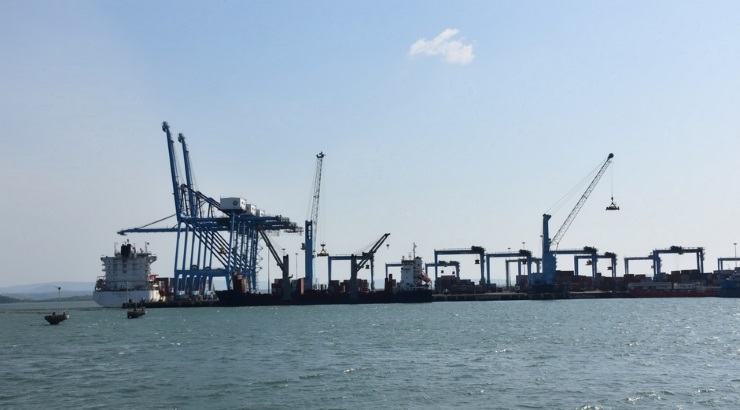
Construction works on the new Kipevu Oil Terminal is nearing completion. The Kenya Ports Authority management made the announcement and said the project is now at 84% complete.
The new Kipevu Oil Terminal is being constructed directly opposite the second container terminal at the port of Mombasa near Dongo Kundu. It will replace the current 50-year-old terminal which is the first and the second container terminal. It is being funded by KPA at a cost of US $385m and built by the China Communications Construction Company.
Scope of work
Construction of the oil terminal is part of the authority’s expansion programme which is key to securing the country’s energy needs. Scope of the project’s works include construction of four berths, dredging, construction of sub-sea (submerged) pipelines for five different petroleum products. These are crude oil, heavy fuel oil and three types of white oil products (DPK-aviation fuel, AGO-Diesel and PMS-Petrol).
For the onshore works, the contractor is expected to put up onshore pipeline across the container terminal, construction of beach valve station, pipeline assembly yard and setting up of material testing laboratory among others. Dredging works were completed in November last year and marine pilling, which is the process of building deep foundations into the ground below sea level to support buildings and structures that are offshore started.
Stabilize gas supply
Upon completion it is expected to have the capacity to handle four vessels of up to 100,000 tonnes and will have a Liquified Petroleum Gas line that is expected to help stabilise cooking gas supply in the country. Currently the country depends on the old Kipevu Oil Terminal and the Shimanzi terminal near the Likoni Ferry channel to offload oil product, both of which can only handle one oil tanker at a time. The Kipevu Oil Terminal will supplement the two facilities at Shimanzi and the previous Kipevu terminal.
The new Kipevu Oil Terminal will have both subsea and land-based pipelines connecting it to the storage facilities in Kipevu, and the capacity to handle five different fuel products. These include crude oil, heavy fuel oil and three types of white oil products (DPK-aviation fuel, AGO-Diesel and PMS-Petrol).





